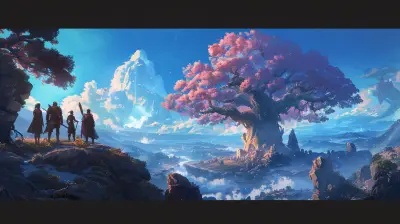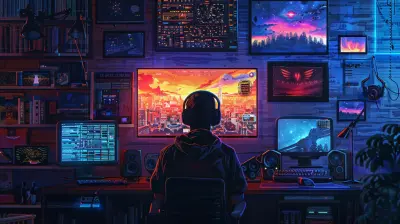Exploring the Influence of Japanese Culture on Western Gaming
8 September 2025
If you’re into gaming as much as I am, you’ve probably noticed how Japanese culture has left its mark on the global gaming industry—particularly in the West. It’s not just about samurai swords, anime hairstyles, or mysterious old senseis (though those are undeniably cool). There's this unique essence, a flavor if you will, that seeps straight from Japanese culture into Western gaming. But why is that? And how did it all start? Let’s break it down.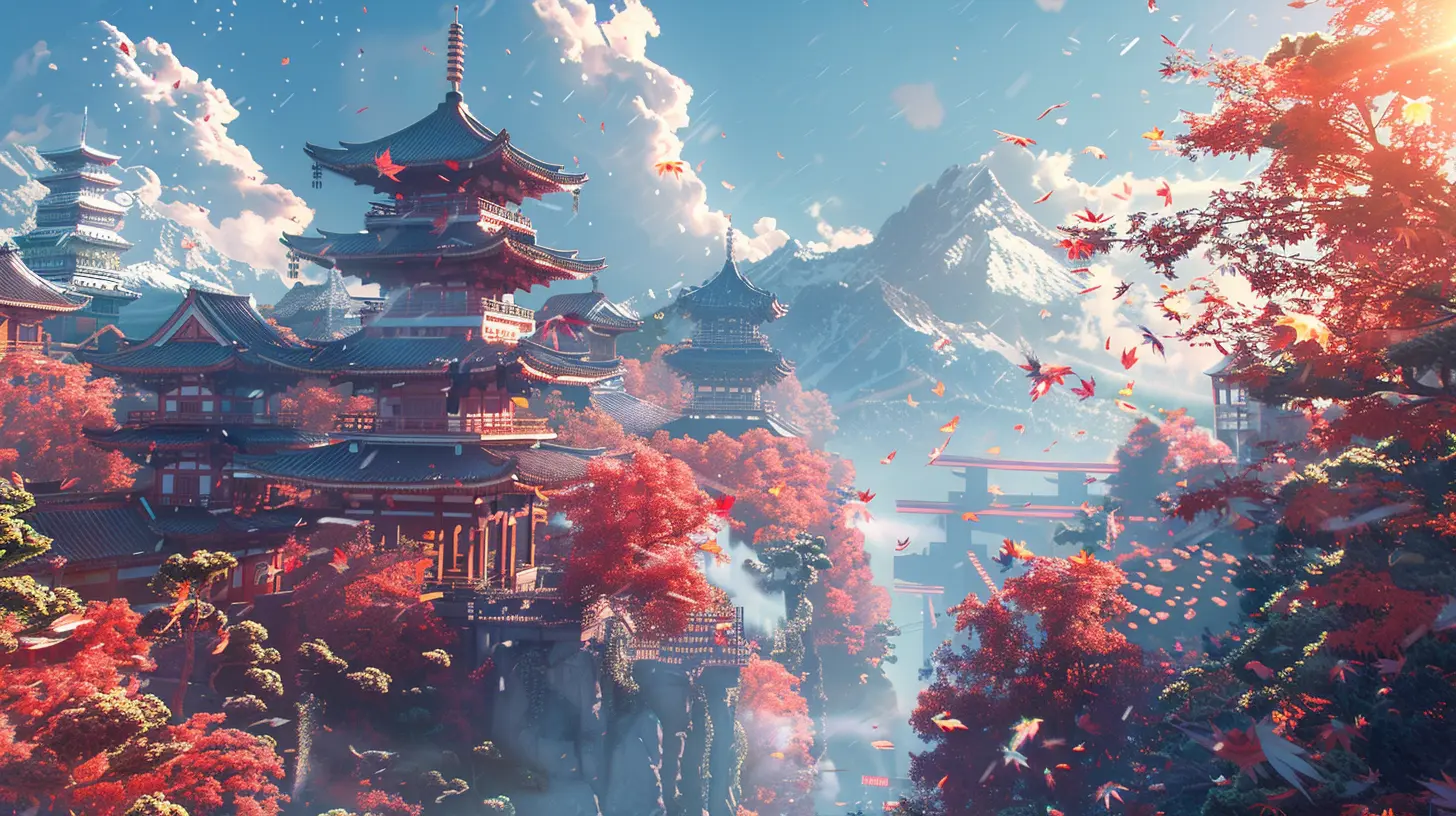
The Roots of Japanese Gaming and Its Global Appeal
You can’t talk about Japanese influence on Western gaming without taking a step back to the origins of gaming itself. Japan has been at the forefront of gaming since, well, pretty much forever. You can trace it back to the golden era of arcades in the '80s. Picture this: the glow of CRT monitors, the clinking of coins, and eager players crowding around cabinets.Companies like Nintendo, SEGA, and Capcom dominated the scene and became household names. They didn’t just create games—they created an entirely new culture. Super Mario, Sonic, Street Fighter… these weren’t just characters; they were icons that defined an era. And let’s face it, the Western world was hooked.
But why did these games resonate so much? On one side, you had tight gameplay mechanics that were fun and addictive. On the other side, you had storytelling and art styles heavily inspired by Japanese traditions and culture. Ever notice how even whimsical games like Mario have their roots somewhere in Japanese mythology? Think about it: a plumber fighting turtle-like creatures and saving the princess? Sounds like a modern fairy tale with an Eastern twist.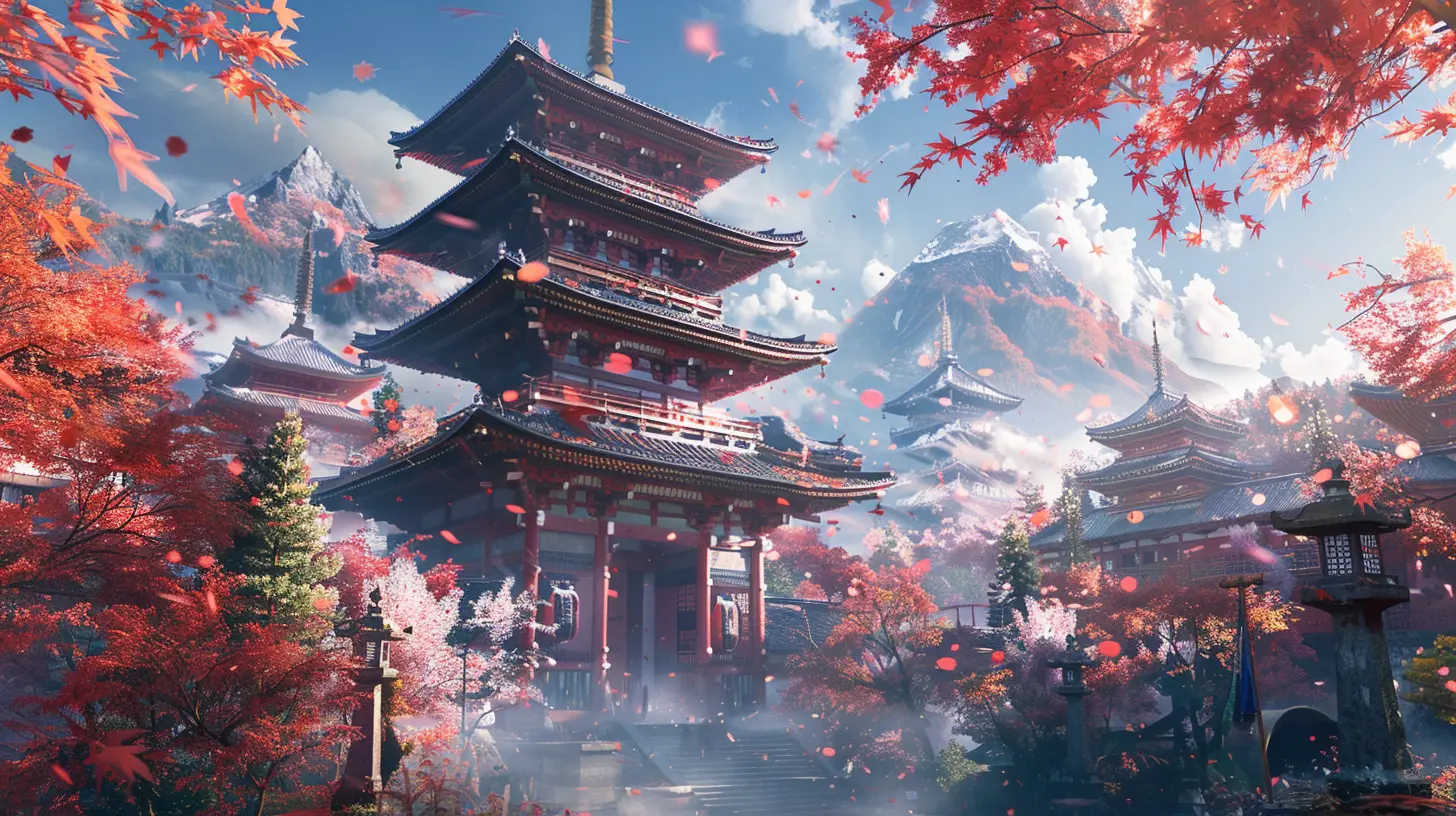
Storytelling: A Distinct Japanese Touch
One thing Japanese developers do exceptionally well is storytelling. They pull you in, make you care about the characters, and then—BAM—they hit you with a twist that leaves you emotionally wrecked. Ever cry over a video game character? Yeah, me too. Blame Japan.Take Final Fantasy VII, for example. When Square released the game in 1997, its story about Cloud, Sephiroth, and the gang didn’t just captivate Japanese audiences; it went worldwide. But here’s where it gets interesting. Unlike a lot of Western narratives that focus on straightforward hero journeys or action-packed explosions, Japanese games often dive into deeper, more philosophical themes. Life, death, identity—big stuff, right?
Western developers definitely took notes. Look at modern RPGs or open-world titles today. You’ll see echoes of this layered, introspective storytelling popping up everywhere.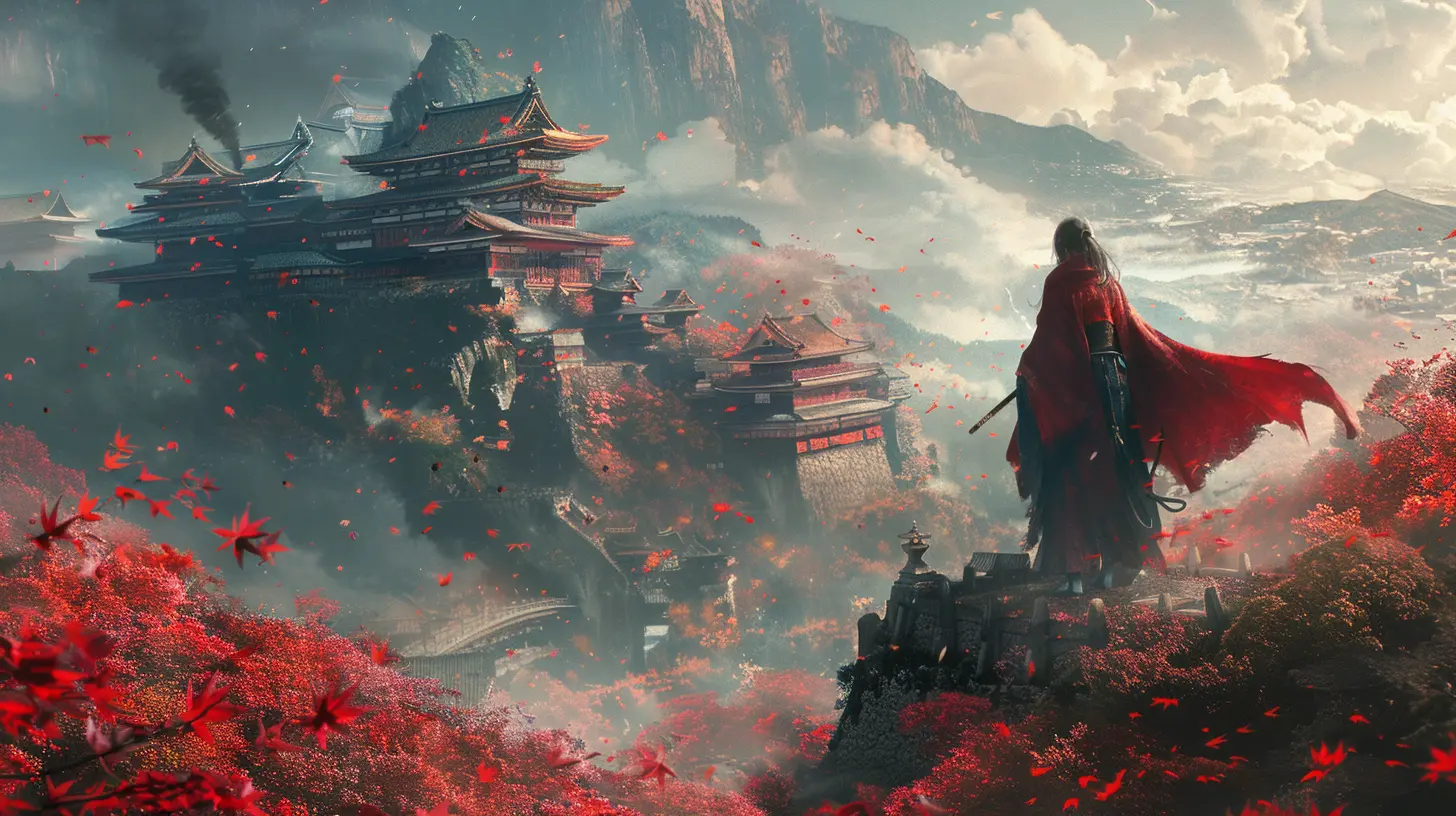
Art and Aesthetics: A Visual Feast
Let’s talk art style. Japanese games are unapologetically vibrant and often surreal. Whether it’s the cel-shaded beauty of The Legend of Zelda: Wind Waker or the gritty cyberpunk vibes of Metal Gear Solid, Japanese developers know how to create worlds that stick with you.Anime’s influence on gaming deserves a whole discussion itself. Love it or hate it, anime aesthetics are now all over Western games. Don’t believe me? Check out games like Borderlands or even Overwatch. The exaggerated character designs, bright colors, and over-the-top visual effects definitely owe a nod to anime’s impact.
What makes this interesting is how Western developers have adapted this style but mixed it with their own twist. It’s almost like fusion cuisine—taking the best of both worlds and coming up with something new.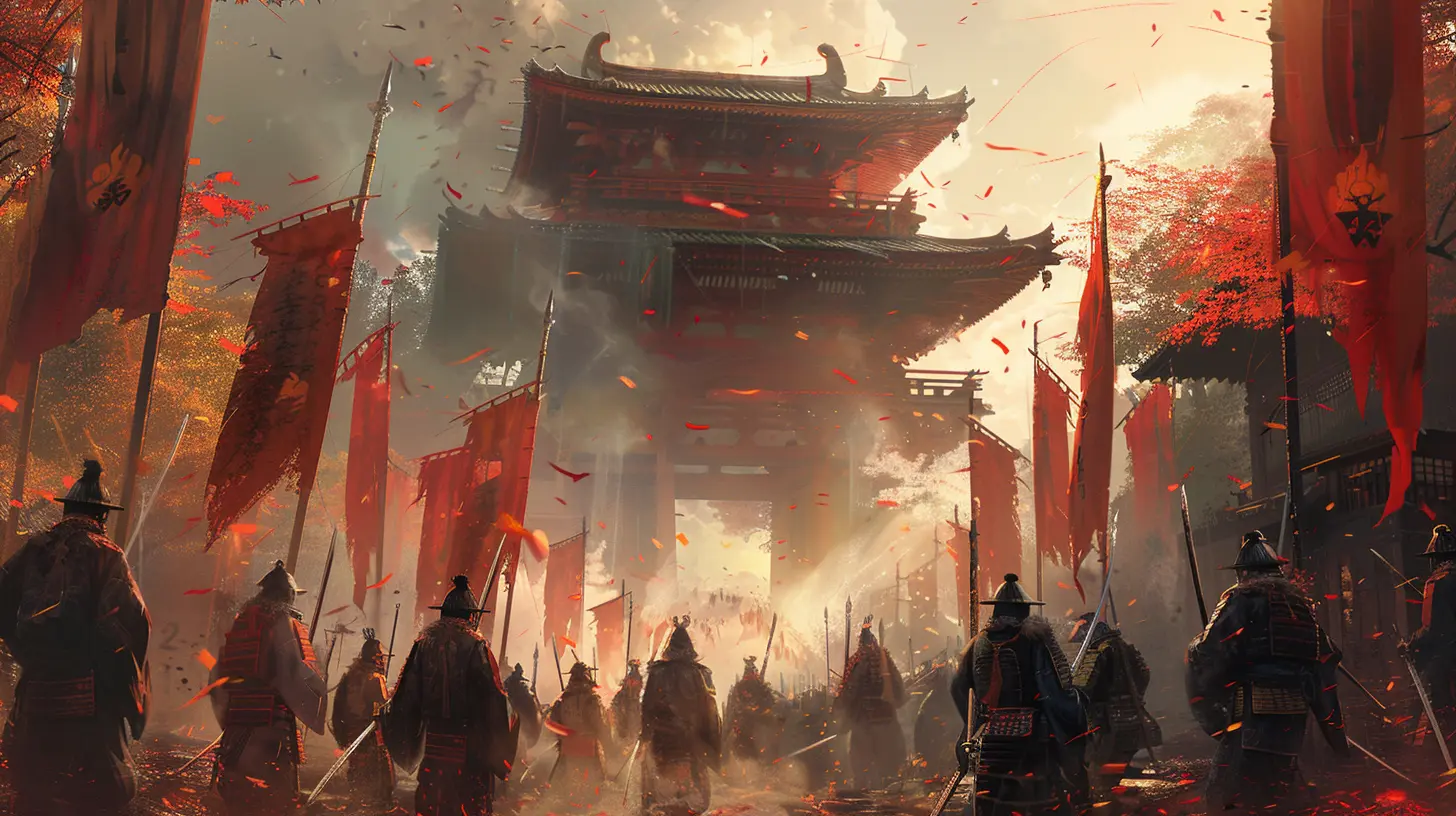
Gameplay Mechanics: Innovation at Its Core
Let’s be honest, Japanese developers have always been a couple of steps ahead when it comes to gameplay innovation. Back in the day, they revolutionized how we experience games. Without Nintendo, we wouldn’t have platformers as we know them. Without Hideo Kojima, stealth mechanics would probably still be awkward and clunky (looking at you, early Western stealth games).But here’s the kicker: Western developers didn’t just copy Japan—they iterated. Take open-world games as an example. While Japan gave us gems like Shenmue, Western developers took that idea and ran with it, leading to games like The Elder Scrolls and Grand Theft Auto.
Still, you can see Japanese DNA in the systems and mechanics of many Western games. Whether it’s the strategic turn-based combat in games like XCOM or the fast-paced, combo-heavy action of games like Devil May Cry, Japanese game design principles have a way of sneaking in.
Cultural Themes and Mythology in Western Gaming
Here’s where it gets fascinating. Japanese culture is rich with mythological creatures, supernatural stories, and deep traditions. And all of this has slowly but surely made its way into Western games.Take Dark Souls and its “souls-like” offspring, for instance. While technically a Japanese game, its impact on Western games is undeniable. The minimalistic storytelling, cryptic NPCs, and punishing difficulty? Those elements added layers of complexity to modern Western RPGs.
Even more directly, Western developers are taking Japanese mythology and reimagining it for their own games. Look at games like Ghost of Tsushima (yes, it's made by a Western studio but drenched in Japanese culture) or indie darling Katana ZERO. They’re clearly inspired by Japan’s unique blend of honor-based traditions, ninja lore, and samurai heritage.
The Rise of Crossover Genres and Collaborations
One of the coolest things to come out of all this cultural exchange is the rise of crossover genres. Think about it: we now have games that blend Japanese RPG elements with Western sandbox design. It’s the best of both worlds.Collaborations across studios have also exploded. Japanese developers have worked with Western publishers to create blockbusters like Bloodborne. Meanwhile, Western games like Nioh have been created with Japanese cultural themes. It’s a cycle of inspiration that doesn’t show signs of slowing down anytime soon.
Esports and Global Competitions
One more area to touch on: esports. Games like Street Fighter and Tekken—both Japanese creations—are staples in the competitive fighting game scene. Their influence has rippled into Western gaming competitions, where fighting games are treated like spectator sports.And this isn’t a one-way street. Western games like Fortnite have started borrowing ideas from Japan’s competitive gaming community, focusing on high-energy, skill-based tournaments.
The Emotional Connection: Why We Love It
So, let’s bring it all together. What makes Japanese culture resonate so strongly in Western gaming? I think it comes down to heart. Japanese developers have always aimed to make games that connect with players on an emotional level. Whether it’s the art, storytelling, or gameplay mechanics, they pour a little bit of their culture into every aspect of the game.Western developers have embraced this approach, adding depth to their own creations. And at the end of the day, isn’t that what gaming is all about? Finding that emotional connection and losing yourself in a story or world?
Conclusion: The Future of Gaming Cultures
The influence of Japanese culture on Western gaming isn’t just history—it’s happening right now. As the gaming world becomes more interconnected, we’ll continue to see this cultural exchange evolve. It’s not about East vs. West anymore—it’s about blending the best ideas from both.Who knows? Maybe the next big gaming trend will come from this fusion of cultures. And I, for one, can’t wait to see what’s next.
all images in this post were generated using AI tools
Category:
Gaming CultureAuthor:

Francesca West
Discussion
rate this article
1 comments
Serenity McGeehan
This article effectively highlights the profound impact of Japanese culture on Western gaming, illustrating how unique aesthetics, storytelling, and gameplay mechanics have reshaped the industry. By examining iconic titles and their cultural significance, it underscores the ongoing exchange of ideas that enriches both gaming communities across the globe.
September 12, 2025 at 3:50 AM

Francesca West
Thank you for your insightful comment! I'm glad you found the article's exploration of the cultural exchange in gaming engaging and impactful.
